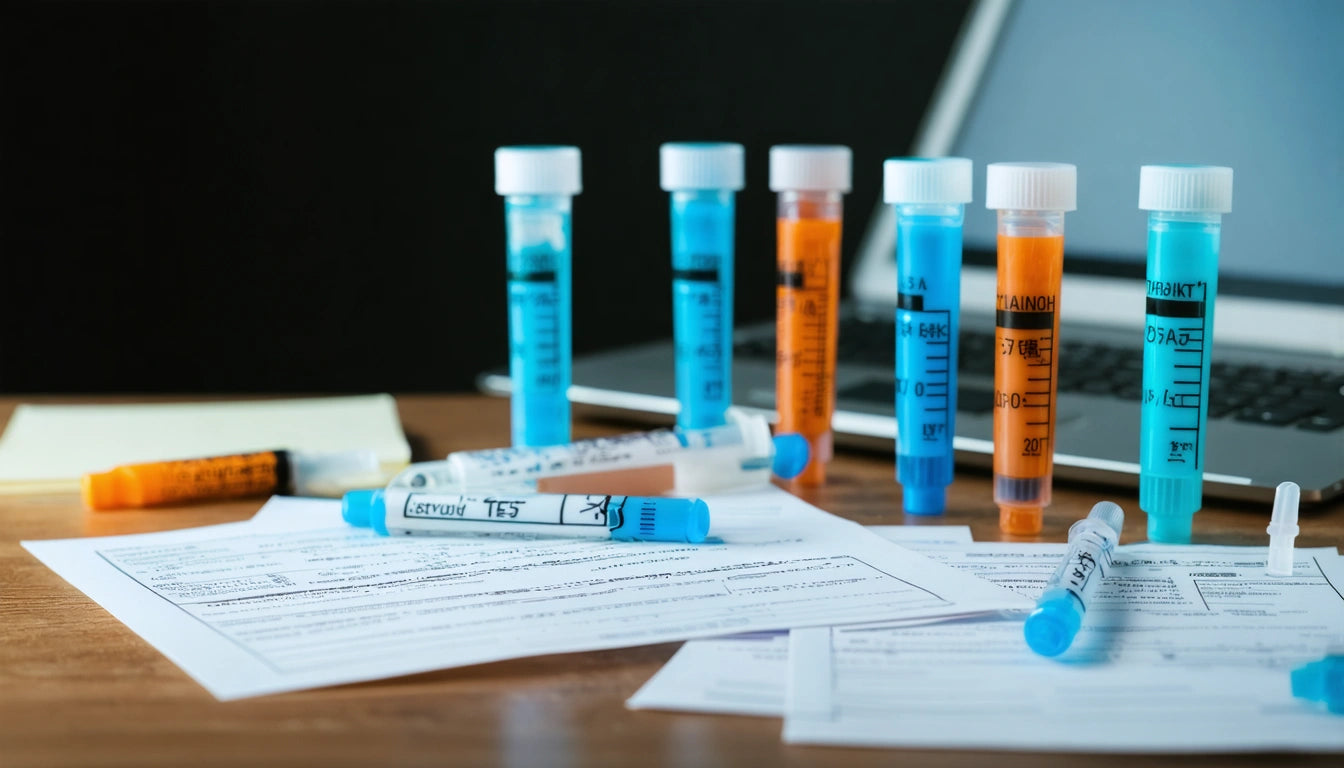Table of Contents
Understanding UA Tests: Purpose, Function, and What They Detect
Urinalysis (UA) tests are among the most common diagnostic tools used in medical settings and workplace screenings. These tests analyze urine samples to detect various substances and markers that can indicate health conditions or the presence of drugs in a person's system. Understanding what a UA test is, how UA tests work, and what they detect can help individuals prepare for these common procedures.
What is a UA Test: Basic Definition and Types
A UA test, or urinalysis test, is a diagnostic examination of urine used to detect substances or cellular material that might be present in urine as a result of certain health conditions or due to substances consumed by the individual. There are three primary types of urinalysis:
- Visual examination - assessing color, clarity, and concentration
- Chemical dipstick test - using reactive strips to detect various substances
- Microscopic examination - analyzing cellular components under a microscope
According to research on urinalysis procedures, these tests are frequently used in routine medical checkups, pre-employment screenings, and monitoring of certain medical conditions.
How UA Tests Work: Collection and Analysis Methods
Understanding how UA tests work involves knowing both the collection process and analysis methods. The standard procedure includes:
1. Sample collection - typically involves a clean-catch midstream technique to minimize contamination
2. Initial assessment - evaluating physical characteristics like color, clarity, and odor
3. Chemical analysis - using dipstick tests that change color when specific substances are present
4. Microscopic examination - if necessary, looking for cells, crystals, bacteria, and other microscopic elements
For drug testing specifically, specialized immunoassay tests are used first as a screening method, followed by confirmatory tests like gas chromatography/mass spectrometry (GC/MS) for positive results.
What UA Tests Detect: Substances and Medical Markers
Drugs and Substances Detected
When asking what does a UA test for in terms of substances, the standard 5-panel drug test screens for:
- Marijuana (THC metabolites)
- Cocaine
- Amphetamines/methamphetamines
- Opiates (morphine, codeine, heroin)
- Phencyclidine (PCP)
Expanded panels may also test for:
- Benzodiazepines
- Barbiturates
- Methadone
- MDMA (Ecstasy)
- Propoxyphene
As noted in comprehensive detection guides, what a UA drug test detects can vary based on the specific panel ordered and the purpose of the testing.
Medical Markers in Urine
Beyond substance detection, UA tests can reveal important medical information by identifying:
- Blood in urine (hematuria) - potentially indicating kidney stones, infections, or more serious conditions
- Protein (proteinuria) - possible sign of kidney disease
- Glucose (glycosuria) - may indicate diabetes
- White blood cells - suggesting infection
- Ketones - could indicate diabetic ketoacidosis or extreme dieting
- Bilirubin - potential liver issues
- Urobilinogen - can indicate liver diseases
- Nitrites and leukocyte esterase - signs of bacterial infection
When asking what is blood UA in urine test results, this refers to the detection of red blood cells, which shouldn't normally be present in urine and may indicate various medical conditions requiring further investigation.
UA Test Accuracy: Factors Affecting Results
Several factors can influence the accuracy of UA test results:
- Sample contamination - improper collection techniques can compromise results
- Timing - how recently substances were consumed affects detection
- Hydration level - very diluted samples may produce false negatives
- Medications - certain prescription and over-the-counter drugs can cause false positives
- Food consumption - some foods like poppy seeds can trigger positive results for opiates
According to research on testing variables, laboratories implement specific gravity and creatinine tests to check for diluted samples that might indicate attempts to mask substances.
For those concerned about testing, our specialized collection of testing products provides options for those who need reliable sampling materials for various purposes.
Preparation and Considerations for UA Testing
When preparing for a UA test, consider these important factors:
- Disclosure of medications - inform the testing facility about all prescription medications
- Hydration - maintain normal hydration (extreme water consumption can invalidate results)
- Timing awareness - understand detection windows for various substances
- Collection protocols - follow proper collection instructions to ensure valid results
- Privacy rights - know your legal rights regarding testing procedures and results
For military personnel, additional testing protocols may apply, with stricter standards and more comprehensive testing panels.
Understanding what a UA test is and how it works allows individuals to approach testing with knowledge and preparation. Whether for medical diagnosis, employment screening, or monitoring, UA tests remain one of the most accessible and informative diagnostic tools available in modern healthcare and compliance screening.











Leave a comment
All comments are moderated before being published.
This site is protected by hCaptcha and the hCaptcha Privacy Policy and Terms of Service apply.